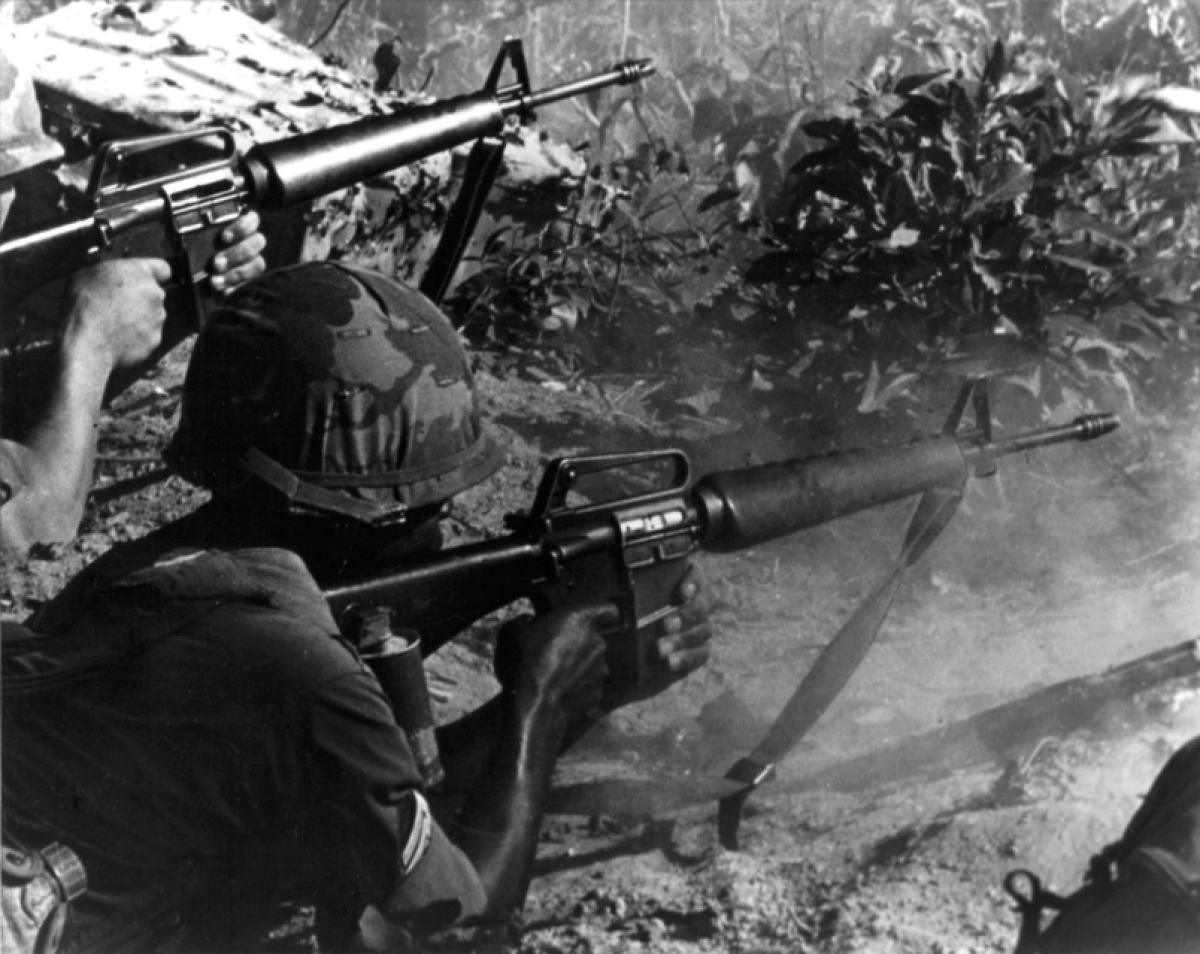ShtrRdy
Well-Known Member
I think I read or heard that one of the IMR powders was the preferred choice for AR-15/M-16 cartridges but I don't recall which one. Do you know what the original load was?
 Help Support Long Range Hunting Forum
Help Support Long Range Hunting Forum

 www.pewpewtactical.com
www.pewpewtactical.com
It is discovered that IMR 4475 cannot reliably achieve the quoted muzzle velocity of 3,300 fps within the accepted maximum chamber pressure specs. At the same time, Olin-Winchester is proposing a new cartridge, the .224E5. The .224E5 and its predecessor, the .224E4, are both based on the .25 Remington case, shortened to fit within the same action length as the .223 Remington. However, the .224E5 possesses a rebated rim so that existing .223 Remington bolt faces need not be altered. (Oddly enough, these cartridges bear more than a passing similarity to the .219 Donaldson Wasp, albeit without a rim.)The powder selected in the design of the m16 was DuPont IMR 4475. The first M-16s went to the Green Berets and they worked flawlessly. Unfortunately, the Military had a gun powder contract with Olin and the switched to powder to WC846 which got a lot of GIs killed.
There is a good article on pew pew tactical that goes into all the failures of the m16 .

How And Why The M16 Failed In Vietnam (And Is It Reliable Today?)
How bad was the M16 during the Vietnam War? And can you trust it (and the civilian AR-15 variants) today? We cover it all.www.pewpewtactical.com
After my return from RVN, I read an Army report saying the powder was too slow burning and the cellulose in the powder was clogging the gas ports. This was my experience. Wish like hell I could locate the report and put all this other BS to rest. The original powder/bullet/primer/brass was made by (I can not remember the mfg. of the ammo for testing) and no failures in testing in Maryland. Then ammo was put up for bid. All the ammo had to do was make the Mil Spec FPS/bullet weight. There must be a dozen different burn rates that will meet the Mil Spec for a 55 gr. bullet. There is so much BS surrounding the so called "failureIt is discovered that IMR 4475 cannot reliably achieve the quoted muzzle velocity of 3,300 fps within the accepted maximum chamber pressure specs. At the same time, Olin-Winchester is proposing a new cartridge, the .224E5. The .224E5 and its predecessor, the .224E4, are both based on the .25 Remington case, shortened to fit within the same action length as the .223 Remington. However, the .224E5 possesses a rebated rim so that existing .223 Remington bolt faces need not be altered. (Oddly enough, these cartridges bear more than a passing similarity to the .219 Donaldson Wasp, albeit without a rim.)
"Cartridge, 5.56mm Ball, M193" is officially type-classified. Pushed by OSD over the objections of the TCC, it specifies the Remington-designed projectile, a muzzle velocity of 3,250 fps, IMR 4475 powder, and the existing average 52,000psi pressure limit. Remington, Olin, and Federal Cartridge all refuse to offer bids. Olin objects to certain specifications on cartridge case wall thickness and to the specifications of IMR 4475 propellant. Remington objects to the same case specifications and recommends that the prescribed maximum mean chamber pressure be increased from 52,000psi to 53,000psi. Federal Cartridge expresses the view that the maximum mean chamber pressure should be
raised to 54,000psi.
Remington and Olin-Winchester representatives meet at Frankford Arsenal to discuss possible relaxation of primer sensitivity limits. They are reluctant to accept any limits other than 12-60 in-oz. Frankford indicates that this is unacceptable. Remington counters that a 12-48 in-oz limit will result in rejection of 50 percent of the primers. Olin-Winchester's predictions are far worse, estimating that 2 out of 3 primer production lots will be rejected. This is later amended to estimate rejection of 90 percent of the primers.
Frankford Arsenal notifies Olin, Remington, and Federal that both CR 8136 and WC846 will be approved as permissible alternates to IMR 4475 in the loading of 5.56mm M193 ball ammunition.